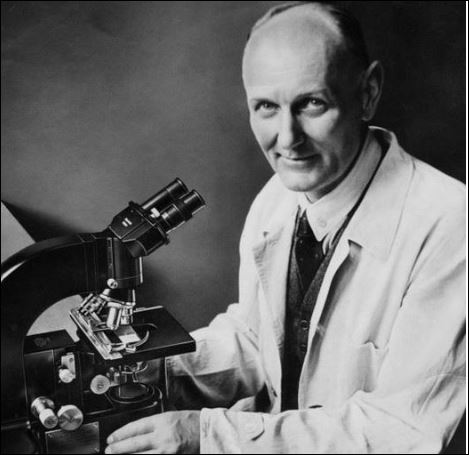Why was Gerhard Domagk Awarded the Nobel Prize for Physiology or Medicine in 1939?
Gerhard Domagk's Nobel Prize: A Milestone in the Battle against Infectious Diseases
In 1939, Gerhard Domagk, a German bacteriologist, was awarded the Nobel Prize for Physiology or Medicine in recognition of his groundbreaking work in the field of chemotherapy. Domagk’s pivotal contributions to the development of antimicrobial drugs, particularly the discovery and therapeutic application of the sulfonamide class of antibiotics, played a crucial role in his esteemed recognition by the Nobel Committee. This article delves into the remarkable achievements that led to Domagk’s Nobel Prize and sheds light on the enduring impact of his discoveries in the fight against infectious diseases.

Revolutionizing Antibiotic Therapy:
Gerhard Domagk’s most significant breakthrough came with the discovery of the antimicrobial properties of sulfonamides, a class of synthetic drugs. In the late 1920s and early 1930s, Domagk conducted extensive research on the dye Prontosil, which was found to possess remarkable antibacterial effects. He demonstrated that Prontosil was highly effective in treating bacterial infections in animals, particularly streptococcal infections.
Domagk’s experiments unveiled the potential of sulfonamides as a novel form of therapy against a wide range of infectious diseases. His pioneering work paved the way for the development of various sulfonamide derivatives and laid the foundation for the modern era of antibiotic treatment.
Impacting Public Health:
The significance of Domagk’s discovery was further underscored by its impact on public health. Shortly after the introduction of sulfonamide drugs, their therapeutic efficacy was demonstrated in the treatment of various bacterial infections, including pneumonia, meningitis, and urinary tract infections. These antibiotics proved particularly vital during World War II when infections among soldiers were prevalent.
The availability of effective antimicrobial agents brought about a significant reduction in mortality rates and marked a turning point in the fight against infectious diseases. Domagk’s work not only saved countless lives but also paved the way for the development of subsequent antibiotics, ultimately transforming the field of medicine.
Legacy and Continued Impact:
Gerhard Domagk’s Nobel Prize win in 1939 recognized the transformative impact of his work in the field of chemotherapy. His pioneering discoveries in the realm of sulfonamide antibiotics revolutionized the treatment of bacterial infections and set the stage for the development of other life-saving antibiotics, such as penicillin.
Domagk’s legacy extends far beyond his Nobel recognition. The advent of antibiotics spurred extensive research into antimicrobial therapy and led to the discovery of numerous other classes of antibiotics. The ongoing battle against antibiotic resistance remains a testament to the continued relevance and impact of Domagk’s groundbreaking contributions.
Gerhard Domagk’s Nobel Prize in Physiology or Medicine in 1939 celebrated his seminal discoveries in the field of chemotherapy, particularly his pioneering work on sulfonamide antibiotics. Domagk’s revolutionary research revolutionized the treatment of bacterial infections, significantly improving public health and saving countless lives.
His contributions marked a turning point in the fight against infectious diseases and laid the groundwork for the development of subsequent generations of antibiotics. Gerhard Domagk’s enduring legacy continues to inspire researchers in their quest for innovative solutions to combat the ever-evolving challenges posed by infectious microorganisms.




